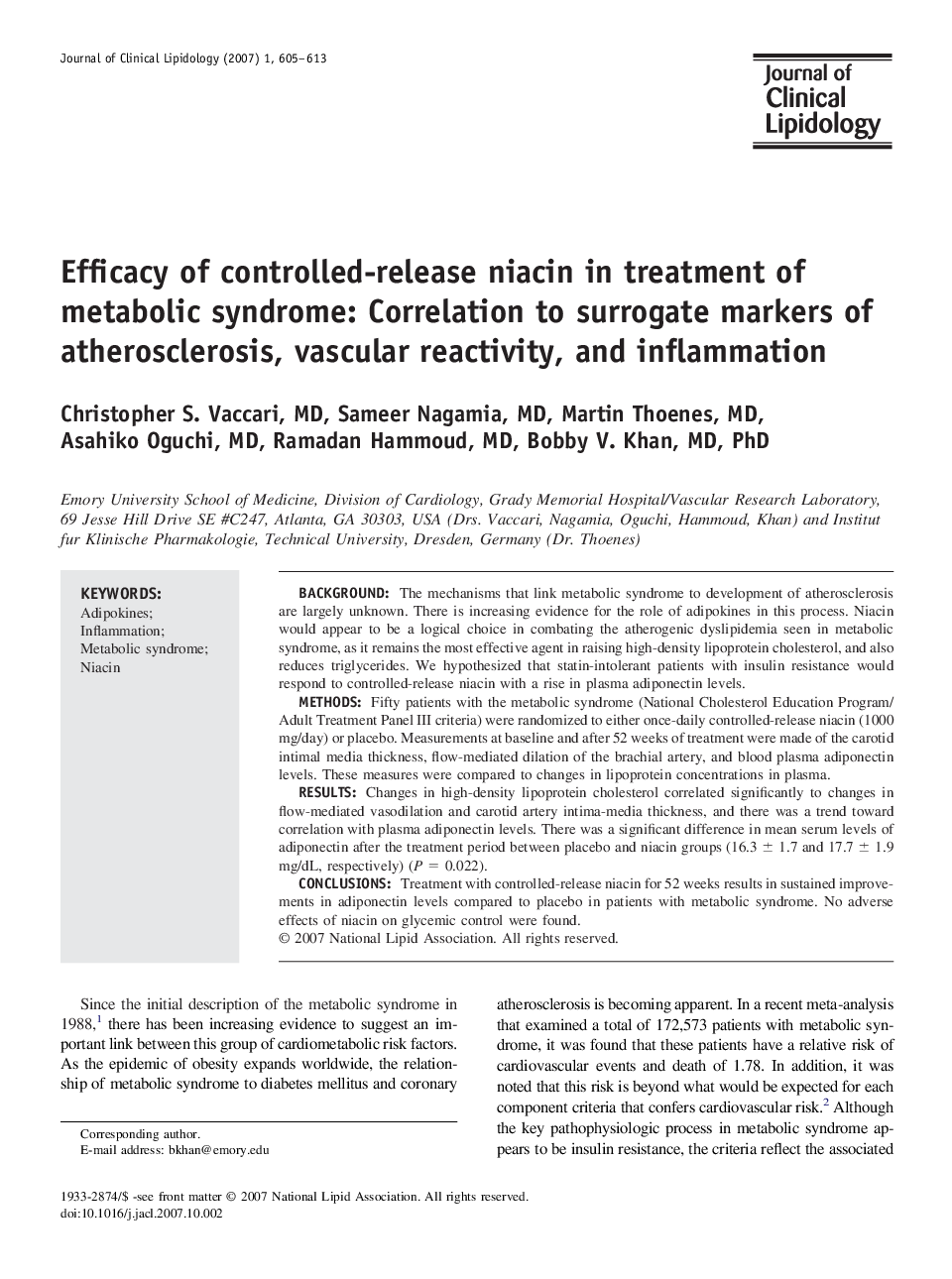| Article ID | Journal | Published Year | Pages | File Type |
|---|---|---|---|---|
| 2967001 | Journal of Clinical Lipidology | 2007 | 9 Pages |
BackgroundThe mechanisms that link metabolic syndrome to development of atherosclerosis are largely unknown. There is increasing evidence for the role of adipokines in this process. Niacin would appear to be a logical choice in combating the atherogenic dyslipidemia seen in metabolic syndrome, as it remains the most effective agent in raising high-density lipoprotein cholesterol, and also reduces triglycerides. We hypothesized that statin-intolerant patients with insulin resistance would respond to controlled-release niacin with a rise in plasma adiponectin levels.MethodsFifty patients with the metabolic syndrome (National Cholesterol Education Program/Adult Treatment Panel III criteria) were randomized to either once-daily controlled-release niacin (1000 mg/day) or placebo. Measurements at baseline and after 52 weeks of treatment were made of the carotid intimal media thickness, flow-mediated dilation of the brachial artery, and blood plasma adiponectin levels. These measures were compared to changes in lipoprotein concentrations in plasma.ResultsChanges in high-density lipoprotein cholesterol correlated significantly to changes in flow-mediated vasodilation and carotid artery intima-media thickness, and there was a trend toward correlation with plasma adiponectin levels. There was a significant difference in mean serum levels of adiponectin after the treatment period between placebo and niacin groups (16.3 ± 1.7 and 17.7 ± 1.9 mg/dL, respectively) (P = 0.022).ConclusionsTreatment with controlled-release niacin for 52 weeks results in sustained improvements in adiponectin levels compared to placebo in patients with metabolic syndrome. No adverse effects of niacin on glycemic control were found.
